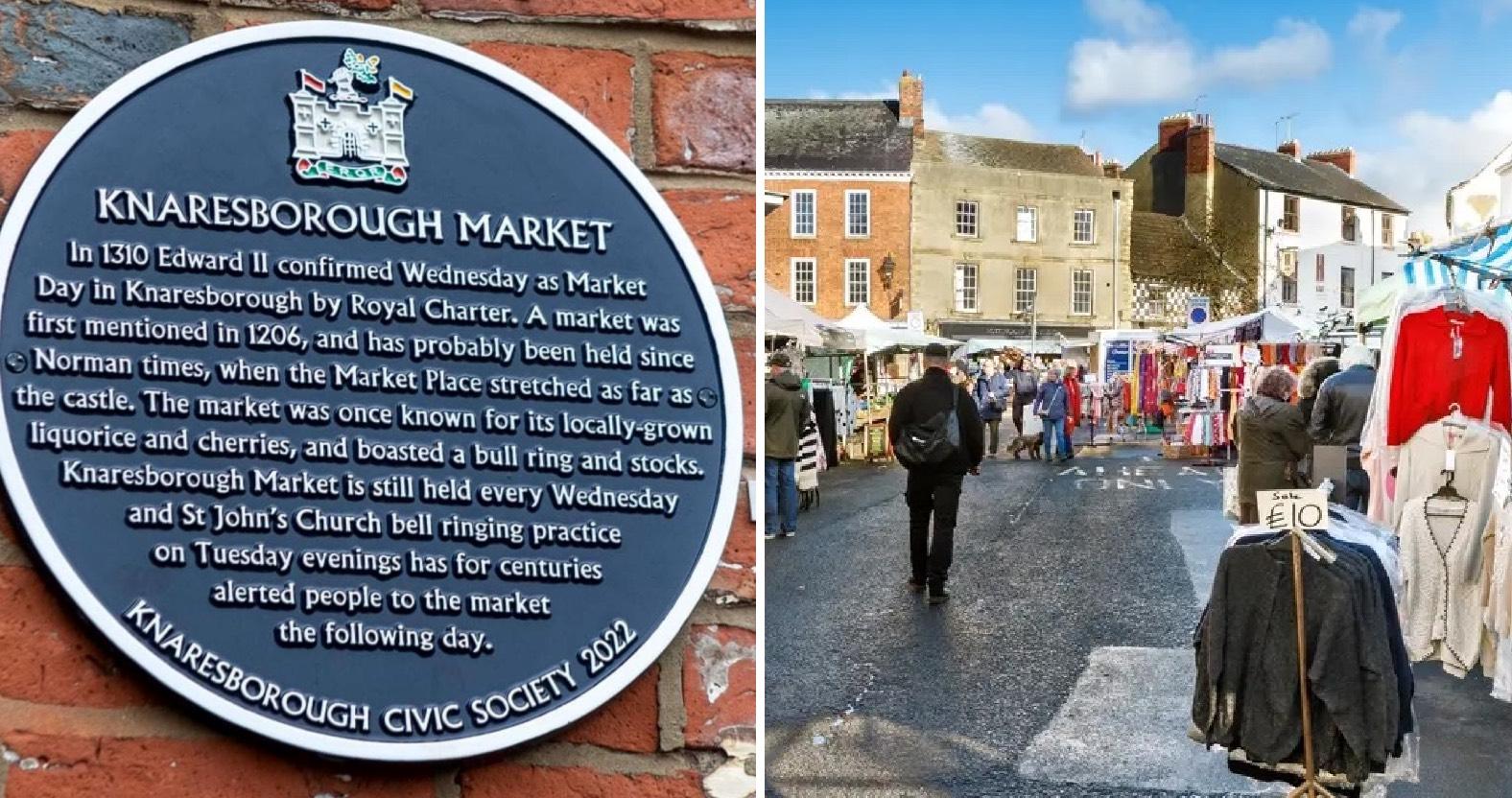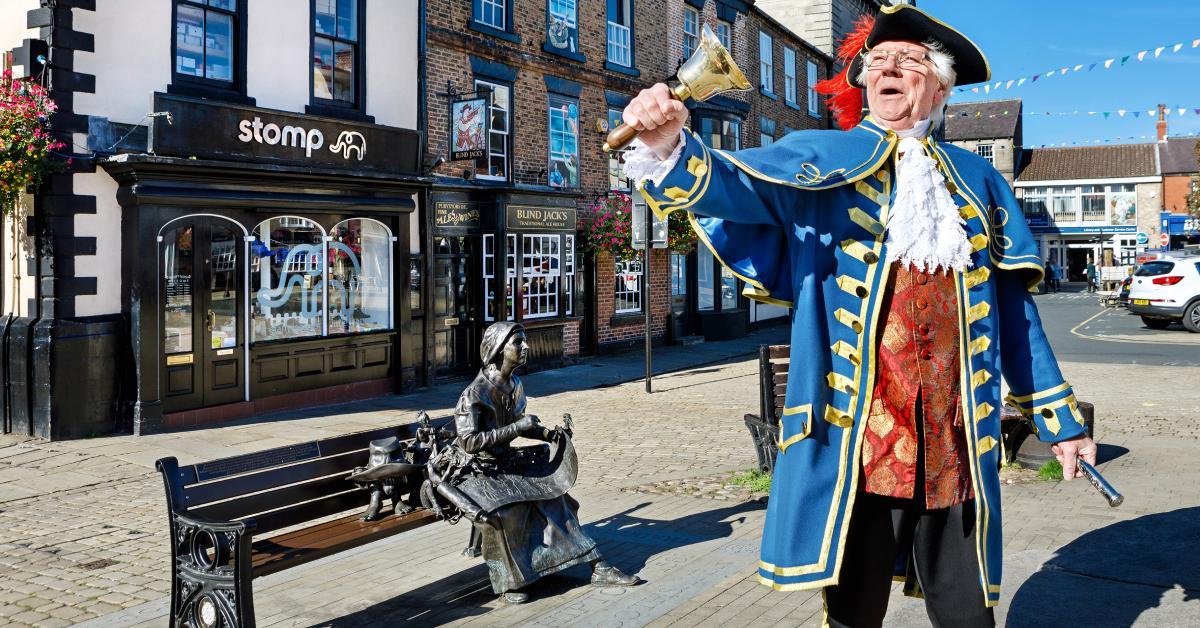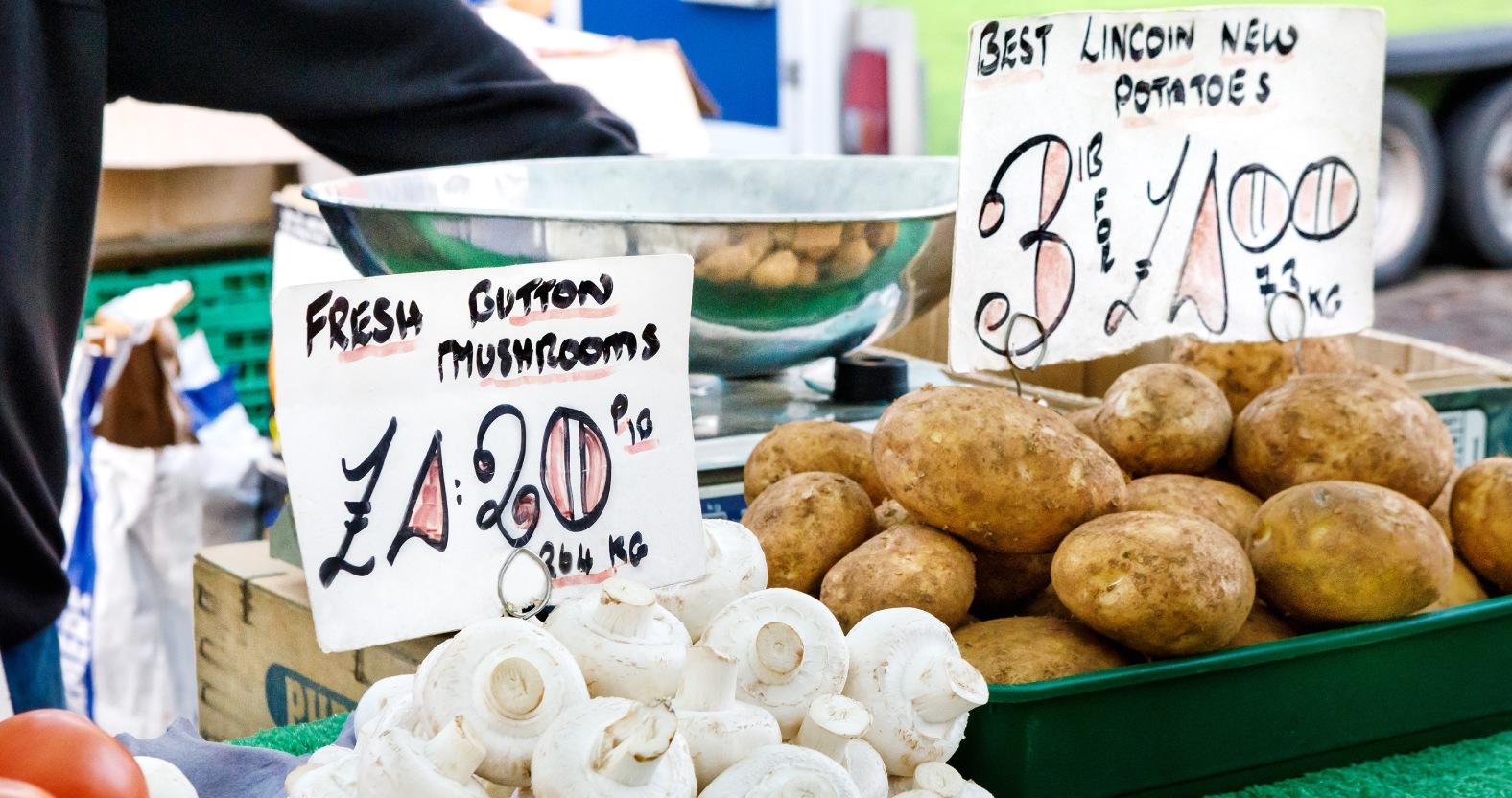Subscribe to trusted local news
In a time of both misinformation and too much information, quality journalism is more crucial than ever. By subscribing, you can help us get the story right.
- Subscription costs less than £1 a week with an annual plan.
Already a subscriber? Log in here.
01
Sept 2024
Local history spotlight: Knaresborough Market

Hosting one of England’s longest continually run market is an impressive accolade, and one that Knaresborough can proudly claim to hold.
A blue plaque, installed in 2022 by the Knaresborough Civic Society, can be found on Market Street, but the ongoing legacy of the market can be felt in the town itself, through tradition and living history.
Origin and background
The earliest mention of a market in Knaresborough can be found in records from 1206, although a more realistic projection for the date of the first market held may be as far back as the Norman times.
In 1310, King Edward II decreed by Royal Charter that Wednesday would henceforth be market day in Knaresborough. This was a stamp of monarchical approval, granting a town, village or religious organisation permission to hold a regular market.
It also allowed the organisers – be it a town council or monastic order – to collect a fee for traders to set up a stall.
The significance of the granting of a Royal Charter to Knaresborough cannot be overstated; it provided a framework for how trading days operated, and increased the town's reputation and autonomy within the broader feudal system in place across England.
Trade and commerce experienced something of a boom in the Medieval era, due a number of factors including the economic development of Northern Europe, transport improvements and political alliances that helped to establish trade links.
On a local level, markets were integral to the community, not only as a way for residents to sell and purchase wares, but as an important social activity in towns and villages.
To encourage competitive prices, sellers of specific goods were often grouped together in one area. Interestingly, women were believed to make up the majority of stallholders, selling products such as eggs, dairy products and ale, while men were more likely to sell meat and bread.

(L) the viaduct (R) the plaque detailing old market prices
Shaping the town
There are many aspects of modern day Knaresborough that are an homage to the significant part the market played in shaping the town.
Many of the 17th century buildings that stand opposite the Old Town Hall today were specifically designed to accommodate stalls and shoppers in the square. Their roof orientations were designed to enhance drainage and divert rainwater away from falling directly on the market.
Every Tuesday evening in Knaresborough, the bells of St James Church toll. This event would have been heard by town residents throughout the years, alerting them to the fact that the next day was market day.
A bell – albeit a smaller one – was rung again on Wednesday, which not only signalled the start of trading, but as an alert for the ‘market sweepers’ to start their shift.
Their job was to ensure the marketplace was clean, although bear in mind this was a medieval standard of clean, which differs vastly to what we might consider sanitary today.
Knaresborough's town crier still heralds the start of the market every Wednesday, and is an enduringly popular part of the pomp and ceremony.
You can find two plaques commemorating this history in Market Square – the blue plaque, installed by the Civic Society, and one detailing some much older pricing for stalls, set out by the former Knaresborough Urban District Council.

Pic: Charlotte Gale
The present day
Today, the market still takes place every Wednesday, as first established by King Edward II.
Visitors can expect to find a vast array of local independent sellers, showcasing their products. There is also a monthly artisan market held in the castle grounds, organised by Little Bird Made.
However, its future appears to be uncertain, after traders were informed by North Yorkshire Council in July that they would have to bring and set up their own stalls each week.
Currently, traders at Knaresborough and Ripon markets have the option of a stall being supplied and erected by the authority for a surcharge. The move has been met with opposition by traders and visitors alike, with a campaign launched to secure the future of the market.
Tom Gordon, Liberal Democrat MP for Harrogate and Knaresborough also got involved. As part of his ‘Summer Tour’ of the constituency, he visited the market on August 21, to speak to those affected.
He said:
We must keep Knaresborough Market properly funded. It brings so much life to the town.
Defunding it would affect the town, and also the more elderly and disabled stall holders, who would not be able to set up their own stalls.

A stall at the market (Image: Charlotte Gale)
The Stray Ferret was first to break the news of the proposed changes, and has extensively covered all ongoing developments in the unfolding saga since.
Sources for this article include an article on the World History website, a post on the North Yorkshire Country Record Office’s website, a post on the Harrogate Guide website, information shared by Knaresborough Civic Society, written by Mr Mike Baxter, the editor of Tudor and Stuart Knaresborough c2014, an article on the Historic England website and an article on the Medieval Spell website.
0